Explanation of my 10 Ballon d'Or 1975
This is my ranking, my opinion on the Ballon d'Or of the year 1975. This ranking is based on the calendar year, not the season. What counts for this ranking is the player's regularity over the calendar year, the number of matches played, the ability to raise his level in big games, statistics (goals, assists, clean sheets, goals conceded, etc.) and trophies won (collective and individual).
#10 Mario Kempes
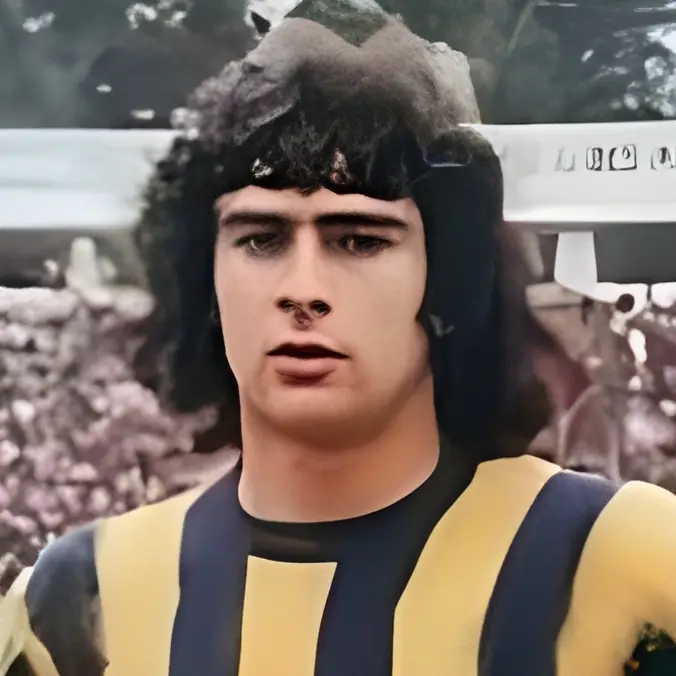
- Age : 20/21 years old
- Club : Rosario Central
- Statistics : 62 games, 43 goals, / assists
- Trophies : /
- Individual Awards : /
In 1975, Mario Kempes was a storm in boots—raw, relentless, and impossible to ignore. At just 21, he wasn’t yet the crowned king of Argentina, nor the World Cup hero he would become. But that year, he roared into the consciousness of South American football like a locomotive with no brakes. Rosario Central was his stage, and the Argentine Primera División, his proving ground. He didn’t just score goals—he devoured them. Twenty-one times he found the net that year, earning the title of top scorer in the league. But Kempes was never just about numbers. He was about hunger. He ran like he was chasing something only he could see. His left foot struck with the fury of a man who knew the world wasn’t watching—yet. His hair flew wild, his finishes were ruthless, and his presence? Uncontainable. Defenders didn’t mark him—they braced for him. He wasn’t elegant like Cruyff or poetic like Zico. He was visceral. A forward who played like a midfielder, tackled like a defender, and celebrated like a man possessed.
#9 Zico
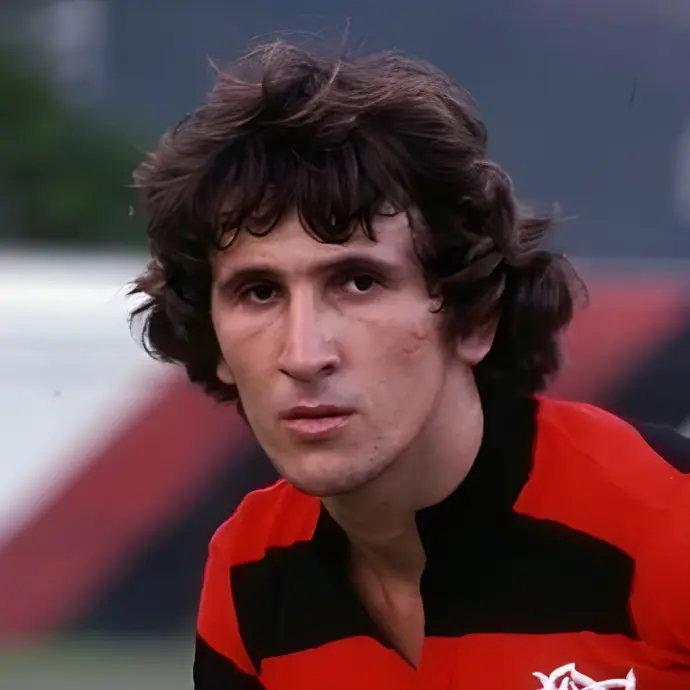
- Age : 21/22 years old
- Club : Flamengo
- Statistics : 56 games, 40 goals, 15 assists
- Trophies : /
- Individual Awards : Rio Championship TOTY, Rio Championship Golden Shoe (30 goals)
In 1975, Zico danced through defenses like a flame through dry grass—flickering, elusive, and impossible to smother. At 22, he was already the soul of Flamengo, but that year, he became its fire. Brazil was still searching for its next great hope after Pelé, and in the Maracanã, they found a boy with curls, vision, and a right foot that whispered poetry. He didn’t just play football—he composed it. Every touch was a stanza, every goal a crescendo. He wasn’t yet the global icon, the Seleção’s maestro, or the Ballon d’Or contender. But in 1975, he was the promise. The prophecy. The player who made fans believe that beauty and brilliance could still coexist on a pitch. In the Campeonato Carioca, he was untouchable. In the Torneio do Povo, he was divine. And though Flamengo didn’t lift every trophy, Zico lifted spirits.
#8 Jupp Heynckes
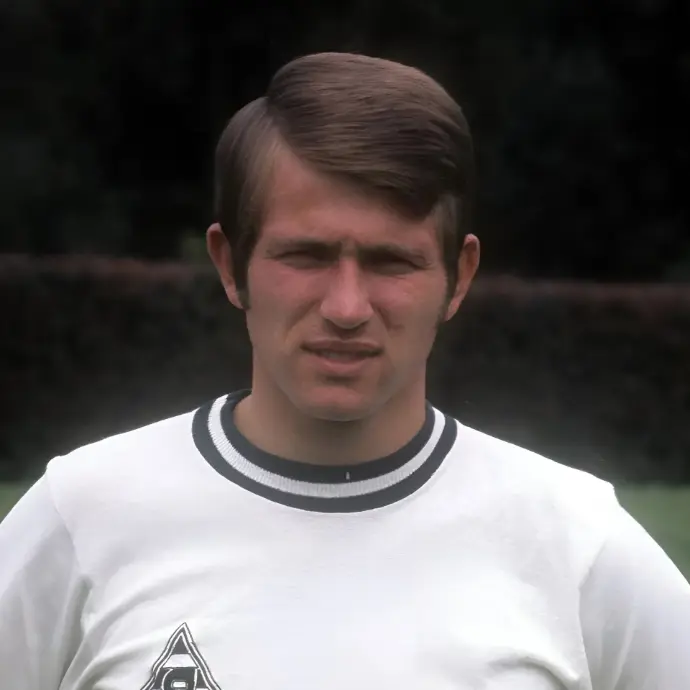
- Age : 29/30 years old
- Club : Borussia M'gladbach
- Statistics : 49 games, 41 goals, 6 assists
- Trophies : Europa League, Bundesliga
- Individual Awards : Europa League TOTY, Europa League Golden Shoe (11 goals), Bundesliga TOTY, Bundesliga Golden Shoe (27 goals)
In 1975, Jupp Heynckes was thunder in human form—precise, unyielding, and devastatingly efficient. At 30, he wasn’t chasing stardom. He was defining it. Borussia Mönchengladbach was his canvas, and that year, he painted in goals. Twenty-seven times he struck in the Bundesliga, notching the top scorer title outright, ahead of even Gerd Müller. But Heynckes didn’t need flair. He needed only space, a sliver of time, and the ball at his feet. He moved like a man with a secret—always a step ahead, always in control. His style was stripped of excess, his finishing clinical, his presence magnetic. In Europe, he was even more ruthless. Eleven goals in the UEFA Cup led Mönchengladbach to the title, and Heynckes to the summit of continental scoring charts. He wasn’t just scoring—he was conquering. Quiet off the pitch, almost austere, he let his boots do the boasting. In a Germany bursting with icons—Beckenbauer, Netzer, Müller—Heynckes was the silent assassin.
#7 Allan Simonsen
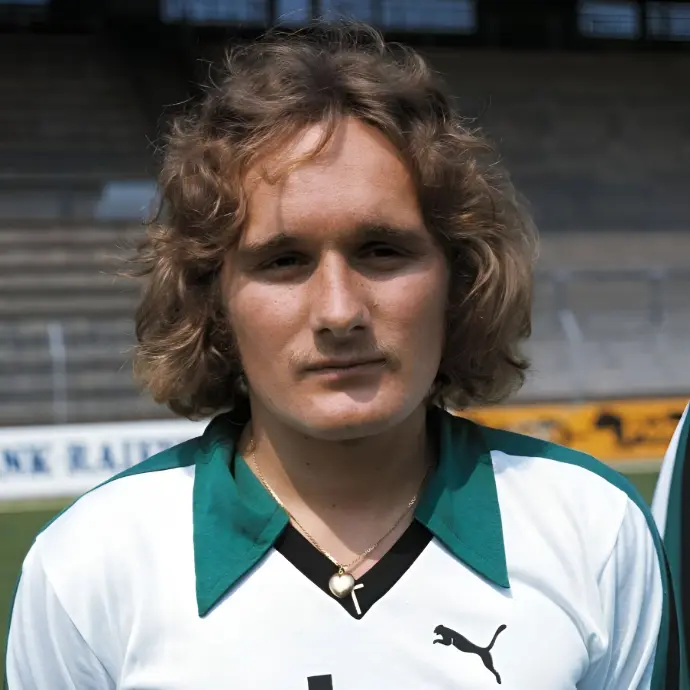
- Age : 22 years old
- Club : Borussia M'gladbach
- Statistics : 51 games, 29 goals, / assists
- Trophies : Europa League, Bundesliga
- Individual Awards : Europa League TOTY, Bundesliga TOTY
In 1975, Allan Simonsen was a spark in a thunderstorm—small in stature, but electric in every touch. At 22, the Danish winger wasn’t just breaking into Borussia Mönchengladbach’s starting eleven—he was breaking expectations. With a frame that barely brushed 1.65 meters, he looked more like a fairy-tale character than a footballer. But once the whistle blew, he became a blur of blonde hair, darting runs, and impossible goals. That year, Simonsen didn’t just play football—he defied it. In the UEFA Cup final, he was incandescent. Held at home by FC Twente, Mönchengladbach exploded in the return leg, and Simonsen lit the fuse. Two goals, both struck with the confidence of a man who knew the moment was his. The trophy was theirs. The spotlight, finally his. He wasn’t a general like Netzer or a finisher like Heynckes. He was a soloist. A winger who could dribble through a phone booth, turn defenders into statues, and score goals that made physics look negotiable. That season, he helped Mönchengladbach to the Bundesliga title too—the first of three straight. And though Denmark wasn’t yet a force on the international stage, Simonsen carried their flag with quiet pride.
#6 Fernando Morena
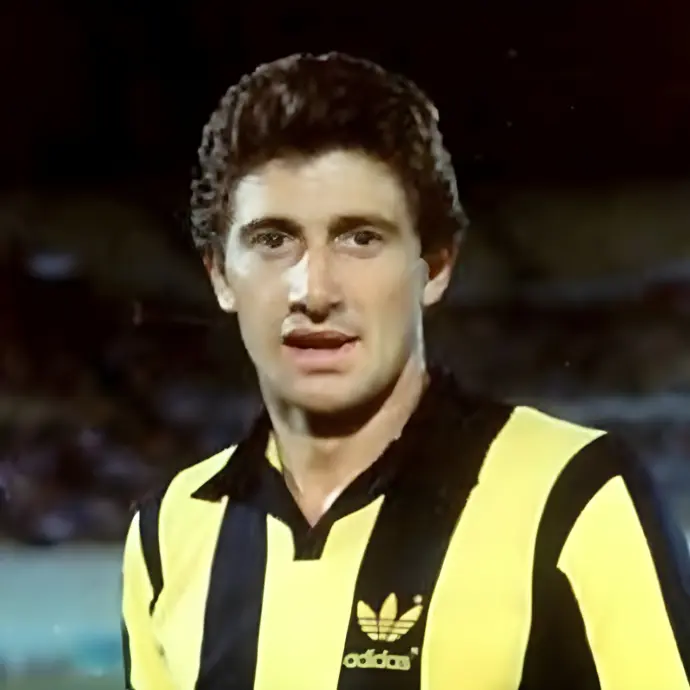
- Age : 22/23 years old
- Club : Peñarol
- Statistics : 42 games, 62 goals, / assists
- Trophies : Uruguayan League
- Individual Awards : Copa Libertadores Golden Shoe (8 goals), Uruguayan League (34 goals), Liguilla Pre-Libertadores Golden Shoe (9 goals)
In 1975, Fernando Morena was a force of nature—relentless, ravenous, and utterly unmerciful in front of goal. At 23, he wasn’t just Uruguay’s best striker—he was its obsession. For Peñarol, he was more than a talisman. He was inevitability in black and yellow. That year, Morena scored 34 goals in the Uruguayan league, claiming his third consecutive top scorer title. But numbers alone couldn’t capture the fear he instilled in defenders or the devotion he inspired in fans. He played like a man possessed—always moving, always hunting. His instincts were surgical, his finishes brutal. In the Copa Libertadores, he added 8 more goals, topping the scoring charts across the continent. He didn’t glide like Zico or dazzle like Simonsen. He struck like thunder. One touch to control, one to destroy. His headers were hammers. His volleys, verdicts. In a country still clinging to the ghosts of 1950, Morena gave Uruguay something new to believe in. He wasn’t nostalgia—he was now. And in 1975, he was everywhere: in the box, on the scoresheet, in the hearts of the hinchada.
#5 Teófilo Cubillas
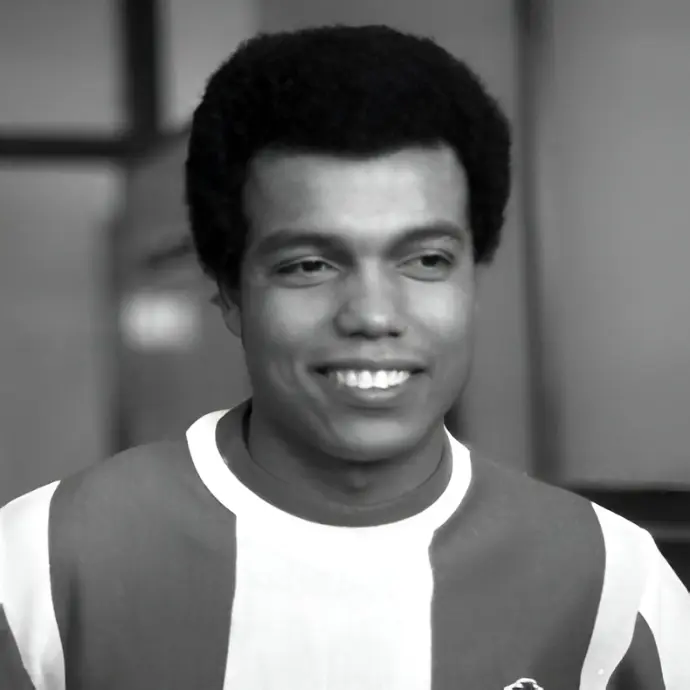
- Age : 25/26 years old
- Club : FC Porto
- Statistics : 41 games, 20 goals, / assists
- Trophies : Copa America, Portuguese League Vice-Champion
- Individual Awards : Copa America POTT, Copa America TOTT
In 1975, Teófilo Cubillas was a symphony in motion—graceful, unpredictable, and devastatingly precise. At 26, “El Nene” was no longer just Peru’s prodigy—he was its poet laureate in boots. That year, he didn’t just play football. He elevated it. In a Copa América without a fixed host, Cubillas became the tournament’s compass, guiding Peru through chaos and into history. He wasn’t the loudest on the pitch, but he was always the clearest. Every touch was a sentence, every goal a declaration. He scored with both feet, from distance, from angles that defied geometry. And though he missed a penalty in the final against Colombia, he was still crowned the tournament’s best player. Because Cubillas didn’t need perfection—he needed moments. And in 1975, he owned them. At FC Porto, he was elegance in exile. A South American artist painting in Portuguese blue. He led them to a vice-championship, but his heart beat in red and white. For Peru, he was more than a number 10. He was memory, magic, and meaning. In a nation still finding its voice on the world stage, Cubillas sang for them all.
#4 Sepp Maier
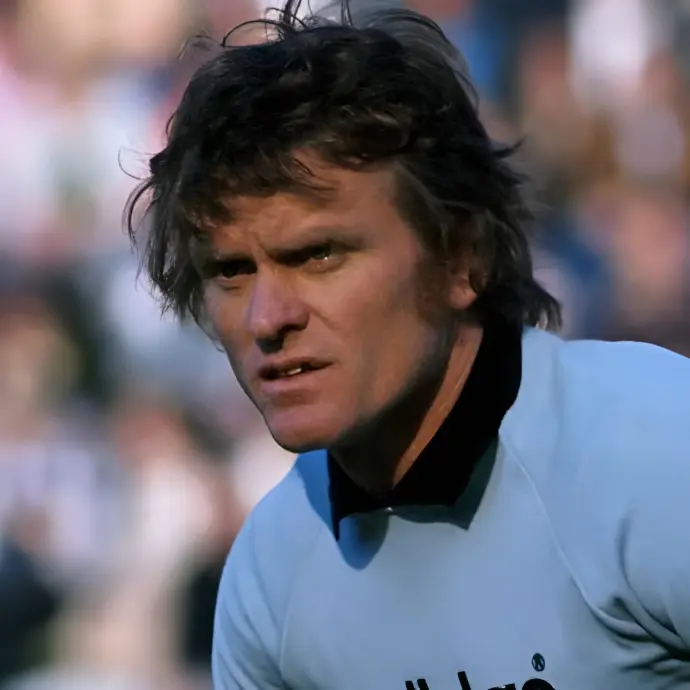
- Age : 30/31 years old
- Club : Bayern Munich
- Statistics : 55 games, 71 goals conceded, 16 clean sheets
- Trophies : Champions League, Finalist UEFA Supercup
- Individual Awards : German POTY, Champions League TOTY
In 1975, Sepp Maier was the storm’s eye—unshaken, unblinking, and utterly unbreakable. At 31, “Die Katze von Anzing” wasn’t just Bayern Munich’s last line of defense. He was their soul. That year, Maier stood behind a dynasty in full bloom, and yet somehow, he still stood out. Bayern conquered Europe again, lifting their second consecutive European Cup, and Maier was the wall that made it possible. In the final against Leeds United, he was more than a goalkeeper—he was a guardian of fate. One reflex save after another, one leap into legend. He didn’t just stop shots. He stopped time. And while Beckenbauer orchestrated and Müller finished, it was Maier who held the line when it mattered most. He played with a grin, but never gave an inch. His blonde curls and rubber limbs made him look like a circus act, but his record was pure steel: 422 consecutive Bundesliga matches without missing a single one. In 1975, he was named German Footballer of the Year—not for the first time, and not for the last. Because Maier didn’t just keep goals. He kept standards.
#3 Franz Beckenbauer
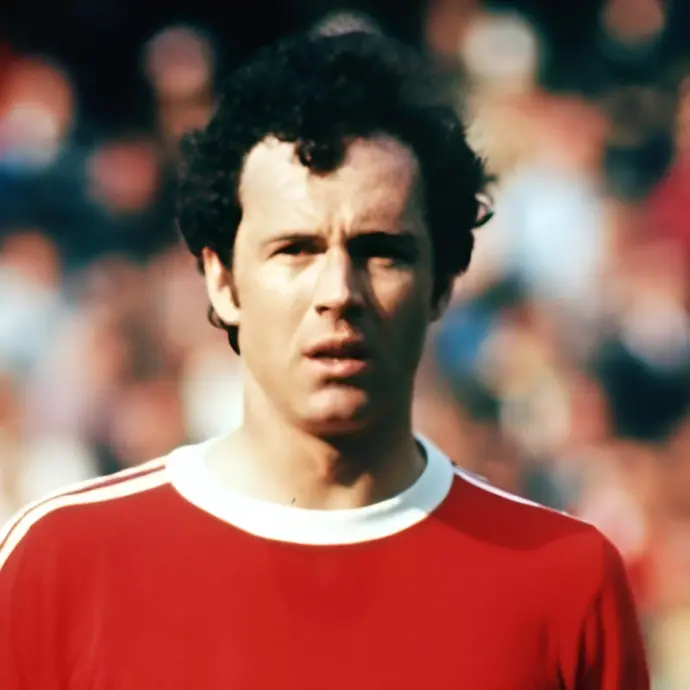
- Age : 30/31 years old
- Club : Bayern Munich
- Statistics : 55 games, 5 goals, 4 assists
- Trophies : Champions League, Finalist UEFA Supercup
- Individual Awards : Champions League TOTY
In 1975, Franz Beckenbauer was command made flesh—elegance in motion, intellect in boots, and authority without arrogance. At 30, “Der Kaiser” was no longer just the architect of Bayern Munich’s rise—he was the embodiment of German football’s golden age. That year, he didn’t chase greatness. He orchestrated it. With Bayern, he lifted a second consecutive European Cup, gliding through matches like a conductor with a ball at his feet. He didn’t tackle—he intercepted. He didn’t shout—he gestured. And the game bent to his will. Whether stepping into midfield or sweeping behind the line, Beckenbauer made the pitch his chessboard, and every move was checkmate. For West Germany, he was the captain, the compass, the calm. A year removed from their World Cup triumph, he led with quiet conviction, never rattled, never rushed. In a team of titans—Müller, Maier, Breitner—he was the crown. And in 1975, the world took note. He finished second in the Ballon d’Or voting, not because he dazzled, but because he defined.
#2 Elías Figueroa
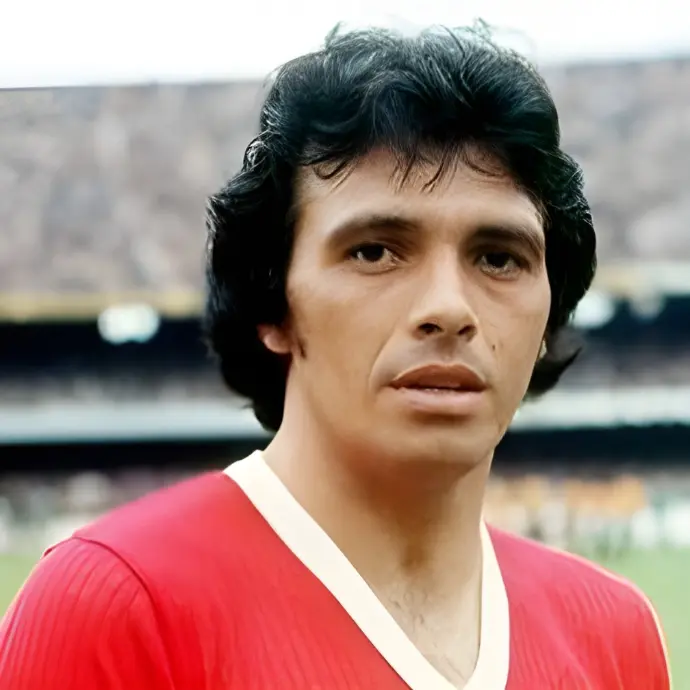
- Age : 28/29 years old
- Club : Internacional
- Statistics : 25 games, 3 goals, 0 assist
- Trophies : Brazilian League, Rio Grande do Sul Championship
- Individual Awards : South American POTY, South American TOTY, Brazilian League POTY, Brazilian League TOTY
In 1975, Elías Figueroa was majesty in defense—stoic, sublime, and utterly untouchable. At 29, he wasn’t just Internacional’s captain—he was its conscience. That year, in the heart of Porto Alegre, Figueroa didn’t merely lead a team. He led a revolution. Internacional claimed its first-ever Brazilian championship, and at the center of it all stood “Don Elías”—calm as stone, sharp as steel. He didn’t slide. He anticipated. He didn’t shout. He commanded. And in the final against Cruzeiro, he rose—literally and figuratively—to head in the winning goal. A beam of sunlight pierced the sky as the ball hit the net, and they called it El gol iluminado—the illuminated goal. Figueroa smiled, but said little. He didn’t need to explain. The moment had already become myth. That same year, he was named South American Footballer of the Year for the second time in a row, ahead of the continent’s most dazzling attackers. Because Figueroa didn’t need flair to be brilliant. He needed vision. Timing. Grace. He was a libero who played like a philosopher—always thinking, always one step ahead. Pelé called him the greatest South American defender of all time. Beckenbauer called him a peer.
Winner : Oleg Blokhin
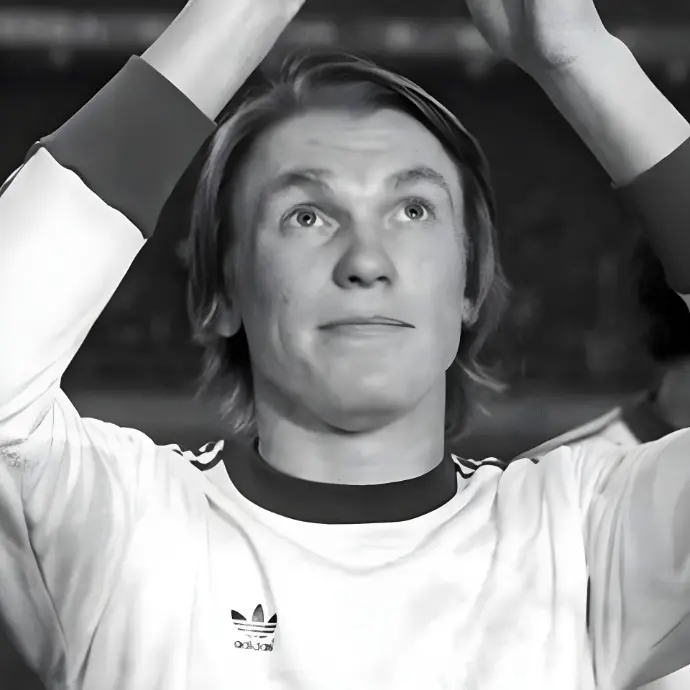
- Age : 22/23 years old
- Club : Dynamo Kyiv
- Statistics : 46 games, 26 goals, / assists
- Trophies : Cup Winners Cup, UEFA Supercup, USSR League
- Individual Awards : Soviet POTY, Ukrainian POTY, USSR League POTY, USSR League TOTY, USSR League Golden Shoe (18 goals)
In 1975, Oleg Blokhin was velocity incarnate—grace at full sprint, a blur of red and white tearing through Europe’s defenses. At just 23, he wasn’t merely the pride of Dynamo Kyiv—he was the face of a new Soviet football. That year, Blokhin didn’t just rise. He soared. He led Dynamo to their first European triumph, the Cup Winners’ Cup, scoring in the final and assisting twice more in a 3–0 dismantling of Ferencváros. Then, as if to underline his supremacy, he single-handedly dismantled Bayern Munich in the UEFA Super Cup—three goals across two legs against the reigning European champions. Beckenbauer watched. Maier dove. Blokhin scored. He was called “La Flèche Ukrainienne”—the Ukrainian Arrow—for good reason. His acceleration was instant, his dribbling hypnotic, his finishing cold as steel. But he wasn’t just a winger. He was a phenomenon. That year, he scored 18 goals in the Soviet league, claimed his fourth straight top scorer title, and was named Soviet Footballer of the Year for the third time running.